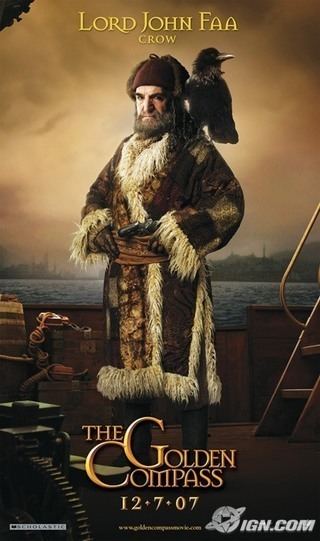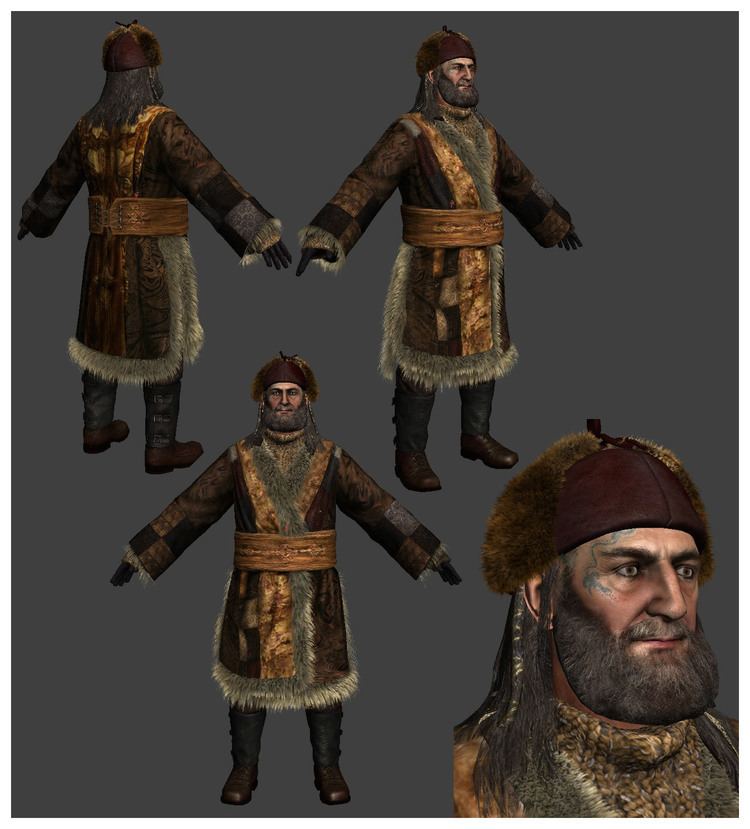Played by Jim Carter | Movie The Golden Compass | |
 | ||
Similar Farder Coram, Lee Scoresby, Serafina Pekkala, Lord Asriel, Ma Costa | ||
John Faa, the King of the Gypsies, was a historical character from Scotland, a contemporary of King James V. Although historical sources place him in Dunbar, in the east of Scotland, much folklore associates him with the Galloway/Ayrshire border.
Contents

Johnnie Faa of Dunbar was leader of the 'Egyptians', or Gypsies, in Scotland. Faa was granted a letter under the Privy Seal from King James V in February 1540, which was renewed in 1553. It was addressed to "oure louit Johnne Faw, lord and erle of Litill Egipt" establishing his authority over all Gypsies in Scotland and calling on all sheriffs in the country to assist him "in executione of justice upoun his company and folkis", who were to "conforme to the lawis of Egipt".

In legend

Johnnie Faa is associated with the tragic tale of "The Countess and the Gypsy". The story runs that Faa, styled King of the Gypsies, ran away with a Countess of Cassillis. Her enraged husband caught up with them at a ford over the Doon, still called the Gypsies’ Steps. He hanged Faa and his followers on a Dule Tree on a mound in front of the Castle Gate at Cassillis while his wife was forced to watch from an upstairs room. He then imprisoned her in Maybole Castle for the rest of her life. The Earl is also supposed to have built an oriel window facing the place of execution and an outside staircase decorated with carvings of the faces of her lover and his gallant band, and then married again while his wife was imprisoned.
An alternative version has it that her lover was an aristocrat who was accompanied by Gypsies who "cuist the glaumourye ower her." All of this seems to be entirely mythical; the oriel window and steps pre-date the time of the tale, the Earl was a devout Churchman unlikely to be given to bigamy. On his wife's death Cassillis wrote a touching letter referring to her as "my deir bedfellow". If she did run away with her lover she didn’t get far, as the Gypsy Steps are only a few hundred yards from the castle.

The story seems to come from the concatenation of an old ballad "Johnnie Faa" well known before the date of the tale. There are many regional versions telling a similar story, and one of which mentions Cassillis. It is believed that Johnnie Faa stayed in the district and had a camp near Culroy Cassillis.
About 1870 "Johnny Faa's Charter Chest" was presented to the Society of Antiquaries of Scotland. It was an oaken chest, elaborately bound with iron, and containing two pewter plates stamped with official marks bearing dates from 1600 to 1764. The gypsy family who kept it until about 1840 supposed these to be Johnny Faa's formal permission to travel about the country. In fact, it appears to be the official box and plates of the Incorporation of Pewterers of Edinburgh.
In modern literature
He appears as a character in at least three novels, S. R. Crockett's "The Raiders", "Silver Sand", and Philip Pullman's His Dark Materials Trilogy. These literary references shift Faa in time. In The Raiders, Faa is placed as a contemporary in south-west Scotland with of Grierson of Lag during the Killing Times, while in His Dark Materials he is moved to southern England in an alternate, somewhat Steampunk universe into a time which is apparently contemporary with our own. In the trilogy "His Dark Materials" John Faa is the leader of the western Gyptians, an adapted, fictionalized version of the Gypsy people.
